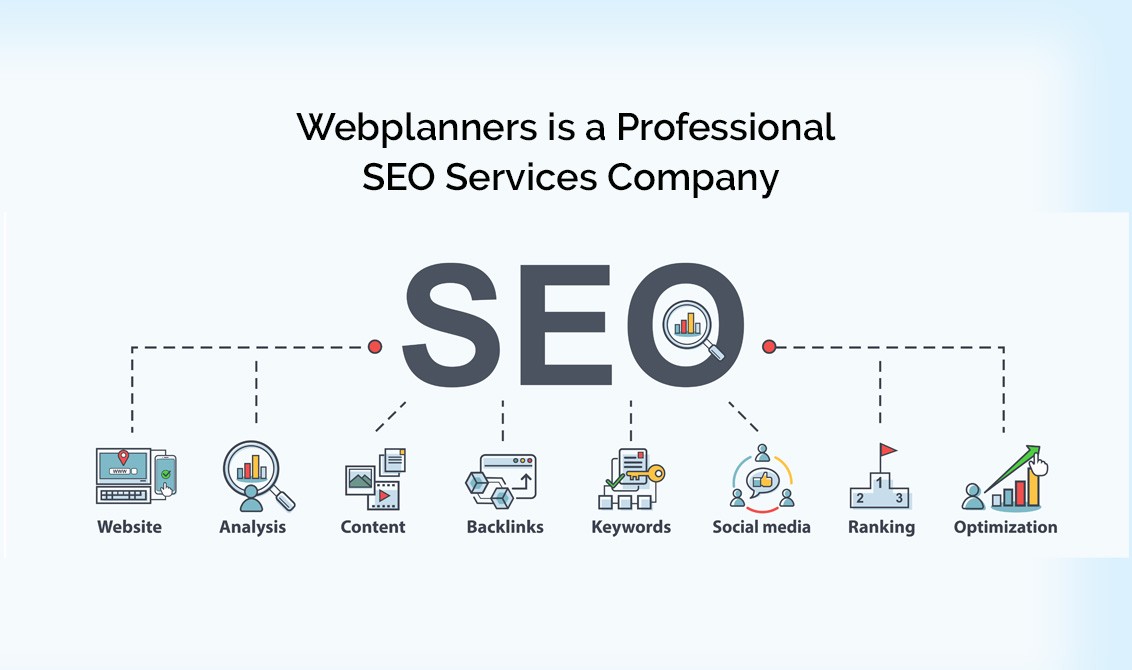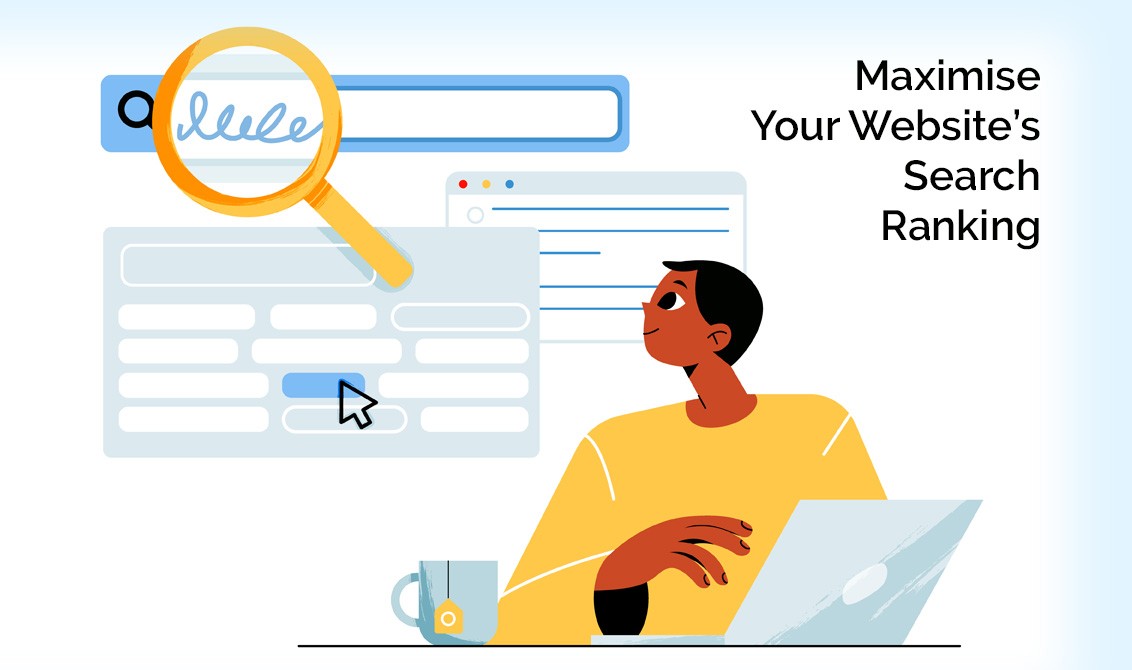
Optimising your website’s search ranking is essential, as it can be a great source of leads and customers for any business. There are various strategies in the SEO world that you can use to help your site get seen in the plethora of search engine results out there and rise to the top.
In order to stay competitive, businesses must strive to keep up with the ever-evolving world of SEO. As search engines continue to change their algorithms, strategies need to adjust in order to remain effective. Staying current on industry news and trends is essential for any business in the digital age. Tools such as keyword research and analysing backlinks can help businesses identify which strategies might be most effective for increasing visibility and ranking in search engine results.
There are various ways businesses can boost their rankings through smart optimisation strategies but no two strategies will look the same since every website and industry differ inherently – what works great for one company may not work well at all for another of another type or size. Regardless, having an understanding of basic SEO concepts and implementing these wisely makes all the difference between success & failure for a business’s website performance within organic searches.
These six SEO tips will help you to maximise your website’s search ranking and drive more organic traffic to your site.
Use relevant keywords
Use a keyword research tool to identify the most popular and relevant keywords related to your business, then include them strategically throughout the content on your site in order to appear on the top of the search engine results pages (SERPs).
In addition to utilising relevant keywords, it’s important to incorporate them throughout the text on your website in order to help search engine algorithms understand the content of each page and decide where to rank it. You should take into account the keyword's relevance, frequency, placement and density when adding them into your content.
For this reason, most businesses use a keyword research tool to identify the optimal keywords they should be using that will engage their target audience through search results. Utilise keywords that are currently popular with online users and make sure you have a good variety of long-tail and short-tail keywords so your site can be easily found by customers who may be typing either general or specific queries into search engines.
When implementing these keywords in your text, place them at strategic locations in the content which can include within titles, headings and meta descriptions as well as naturally within the body of an article or blog post. Also, make sure to position these words naturally within a phrase or sentence rather than adding an excessive amount of them all together without context. Search engines take note of unnatural use of keywords and could penalise websites in accordance with this practice.
Optimising content with relevant keywords ensures that customers find exactly what they’re looking for quickly while also increasing organic traffic on your website.
Optimise title tags and meta descriptions
When it comes to SEO-friendly content, ensuring that all title tags and meta descriptions are optimised is essential for helping Google recognise what each page of your website is about.
To optimise title tags and meta descriptions, it’s important that businesses focus on 1-2 short phrases that accurately and accurately describe the page’s content. This should be achieved through thoughtful keyword research in order to determine which words or topics users are likely to type into a search engine when looking for similar products or services.
Additionally, any keywords containing useful relevant terms should be included in title tags and meta descriptions, however keyword stuffing should be avoided as it can cause issues with search ranking. Businesses should also ensure that their title tags and meta descriptions are clear and catchy – appetising enough for web users to click through from SERPs – whilst still remaining relevant to the website’s overall message and purpose.
Well optimised title tags and meta descriptions will allow businesses to appear more prominently in SERPs and boost website traffic, ultimately increasing leads and sales. Furthermore, optimising these elements plays a vital role in helping businesses build better relationships with customers by providing them with relevant content when they visit websites looking for specific products or services related to their business.
Use backlinks
Backlinks are an effective way of increasing the visibility and authority of your website. They provide an effective pathway of potential customers who can find their way to your site, leading to more sales opportunities. Backlinks help Google recognise and verify trustworthiness of your site by providing evidence that other websites view it as a source of information.
An effective way to build quality backlinks is through link building campaigns where you actively seek out other reputable sites and offer content or products that could benefit from a link back to your site. You should, however, ensure that each web page has relevant, quality content – this will not only improve rankings on search engine outcomes pages but it will also make visitors more likely to stay on the page and click through to discover more about what you have to offer if they find what they came looking for quickly.
Another way to acquire valuable new links is by engaging with influencers who have large audiences in your industry; they may be willing to write posts promoting your business in exchange for financial compensation or free product samples which can result in new customers discovering your brand due to their backlink on the influencer's page.
Working with strategic partners such as vendors, suppliers or franchisees is another great method for generating credible backlinks due to the mutual interest between both parties; when working with these types of collaborators it is important that you establish contact before requesting a link or endorsement so as not to politic any existing relationships.

Optimise images
Images are a great way to draw in audiences and make your web pages look more attractive and visually appealing, but it’s important to remember that search engines also assess website speed and page loading performance. It’s recommended to always optimise image sizes as much as possible before adding an image to any web page – this involves checking the width, height and file type (such as .jpg or .png) of the image file so that it takes up minimal space on a page without compromising quality. This will help ensure that website pages containing images load quickly, resulting in a better user experience for website visitors which could result in increased traffic due to improved search engine rankings.
It is also essential to add Alt tags with descriptive labels explaining what each picture contains - this can be supplemented with one or two keywords where appropriate. This helps users who have disabilities understand the content of the pictures via screen reading software and gives greater context for search engine bots scanning through websites looking for relevant content. Captions can also be added right below pictures with further information which again assists those with disabilities understanding different visual elements within a webpage.
Finally, when uploading digital photos taken from cameras onto websites, some of these files may contain EXIF data which are snippets of information about a photo such as timestamps, locations and camera settings. This is additional data which is unnecessary for displaying images on websites but webmasters should remove this data in order keep file sizes down as much as possible and improve overall page loading speeds which are important factors for SEO purposes.

User experience counts
User experience is a crucial part of optimising for SEO purposes. Making sure the navigation on the website is intuitive and easy to use can help increase conversions. Other important factors for user experience involve making sure websites are optimised with titles, tags and other technical aspects that make it easier for visitors to quickly find what they’re looking for. A fast load time when switching between web pages also ensures that visitors don’t get bored or frustrated waiting, which improves the overall user experience and encourages them to return in future.
Well-optimised websites also create better engagement from users. This means that viewers will be more likely to stay on your website longer, read content more thoroughly and give you feedback – all of which can benefit SEO efforts by sending strong positive signals to search engines who take these factors into account when ranking websites.
Furthermore, while ensuring user experience focuses on usability, it is still important not to forget about optimising web pages using keyword research and relevant content that helps build trust with potential customers; this encourages organic links an mentions of your brand as well as helping create additional targeted traffic opportunities – all beneficial signals that search engines view positively when ranking websites
Try structured data markup
Structured data markup is code placed in HTML web pages that makes certain pieces of content stand out and be better understood by major search engines. This code often comes in the form of schema or microdata, which is used to differentiate content between sites. Using structured data markup allows indexing bots to detect specific terms and concepts embedded within website content, allowing them to understand the context and relevancy of these terms much more accurately and effectively than before.
This helps search engines determine which websites can provide the most comprehensive information on a given topic or keyword, thus providing users with the best possible results when conducting a search query.
By leveraging structured data markup for SEO purposes, businesses can ensure their content stands out from their competitors’ and increases the chances of being ranked highly on SERPs for relevant searches. It also allows businesses to be listed within knowledge graphs, adding further visibility to their brand as well as making it more likely for users to click through from SERPs onto their website. Structured data markup also enables websites to appear as rich snippets, providing extra information about products or services which entice users into clicking through for more detailed query results.
To make sure your website meets all the necessary requirements for successful implementation of structured data markup, experts recommend checking regularly if everything follows Google's recommendations since they are always updating their algorithms with respect to structured data and other elements related to web crawling. Through regular testing with validators like Google Structured Data Testing Tool or Schema Markup Generator tools such as Merkle LogicMarkup, you can make sure that your website adheres to industry standards set forth by Google and other major browsers.
Professional SEO Services Melbourne
Webplanners is a professional SEO services company based in Melbourne. We provide comprehensive strategies and solutions to drive organic website traffic and improve the visibility of businesses in search engines. Our experienced team of experts use the latest tools and techniques to maximise your business’s potential online.
We specialise in improving website rankings, increasing website engagement and targeting relevant customers through tailored SEO campaigns. Our goal is to help businesses maximise their online potential through our specialised services such as SEO audits, web development, link building campaigns, copywriting services etc., at affordable rates.
Contact us today for more information about our services.
Suggested Read: 11 Optimisation Strategies to Boost Conversion with Magento

